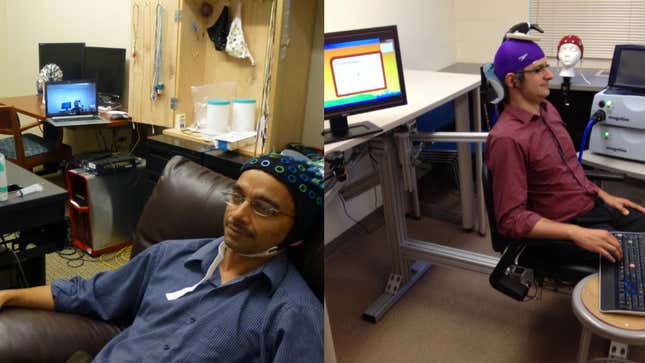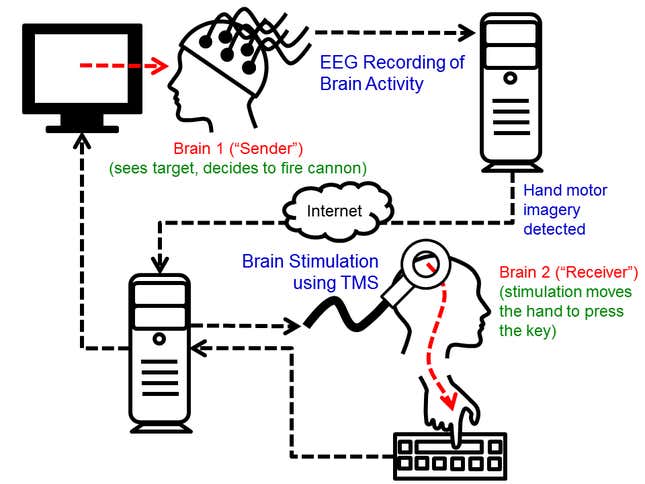
“Yes! Success!”
It wasn’t quite “Mr. Watson. Come Here. I need you.” but it could prove to be just as revolutionary: Researchers at the University of Washington have completed the first experiment demonstrating human brain-to-brain communication. Fittingly given the sci-fi connotations, they used the technology to play a video game.
UW professor Rajesh Rao, hooked up to a machine that reads electrical activity in the brain, transmitted a neural signal over the Internet to his colleague Andrea Stocco across campus, who had a powerful magnetic coil aimed at his brain’s left motor cortex, which controls movement of the right side of the body. While watching a video game on a screen, Rao imagined moving his right hand, and Stocco’s right index finger twitched involuntarily, causing him to tap the space bar on a keyboard.
The experiment combined two well-established pieces of equipment—an electroencephalography machine, which reads brain waves, and a transcranial magnetic stimulation coil, which can trigger them—and used custom computer code to translate Rao’s brain signals into a command for Stocco’s brain. Both devices are non-invasive, though transcranial stimulation does carry a small risk of seizures.

Other researchers at Duke and Harvard have conducted similar experiments between rats, and between rats and humans, respectively, but Rao and Stocco appear to be the first humans to communicate via neural impulses, much like the heroes of the summer action movie “Pacific Rim.”
Although the communication was one-way, from Rao’s brain to Stocco’s finger, the researchers say they have grand ambitions to expand their efforts, although they were careful to note that the technology would only work with simple brain signals, not thoughts, and “doesn’t give anyone the ability to control your actions against your will.”
When the experiment was successfully carried out, Rao and Stocco cheered their efforts with the exclamatory quote above.
“It was both exciting and eerie to watch an imagined action from my brain get translated into actual action by another brain,” Rao said in a release. “This was basically a one-way flow of information from my brain to his. The next step is having a more equitable two-way conversation directly between the two brains.”
In other words, within a few years they may be able to achieve a brain-to-brain high-five.



